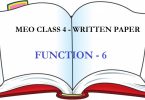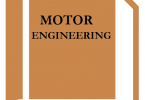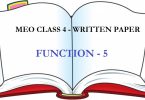- Pitch of propeller is defined as
- Forward movement of propeller when rotated by 360 degree
- Forward movement of propeller in un-yielding medium when rotated by 360 degree;
- Forward movement of propeller when rotated by 3600 when the vessel is floating in water
- Forward movement of propeller when rotated by 360 degree and in sea water;
ANS.: B
- Which of the following pre-painting surface preparation methods is considered most efficient in case of hulls of modern day ships?
- Pickling
- Flame cleaning
- Blast Cleaning
- Wire brushing
ANS.: C
- In- water survey in lieu of a one of the two docking surveys in a 5-year period may be accepted when:
- A suitable high resistance paint is applied to the ships underwater hull
- The ship is less than 15 years old
- The in-water survey provides all the information required by classification society
- A part of the ship is on fire
ANS.: A,C
- Stability of a vessel is defined as:
- Vessel will come not back to its initial position when external disturbance is withdrawn;
- Vessel will come back to its initial position when external disturbance is withdrawn and by suitably shifting of weights;
- Vessel will float at different position when external disturbance is withdrawn;
- Vessel will come back to its initial position when external disturbance is withdrawn;
ANS.: B

- Items no. 1 shown in figure above is
- Deck stringers
- Deck Transverses
- Deck Longitudinals
- Deck Girders
ANS.: C
- Which of the following types of ships are assigned minimum freeboard?
- Container ships
- Bulk Carriers
- Ore carriers
- Oil Tankers
ANS.: D
- A Suezmax vessel will have the following maximum limitations:
- B=34 m, d=10 m
- B=44 m, d=12 m
- B=54 m, d=14m
- B=64 m, d=16 m
ANS.: B
- Peak tanks are tested by:
- Hose test
- By filling them with water up to load water line
- By filling them with water up to the maximum head which can come on them in practice or 2.44 m above tank crown, whichever is higher
- None of the above
ANS.: C
- The primary purpose of fitting a bulbous bow is to:
- Improve the appearance of the ship.
- Strengthen the bow
- Improve propulsive efficiency
- Improve resistance to pounding
ANS.: C
- In longitudinally framed double bottoms, the maximum spacing between solid floors should not exceed ______________ in any region.
- 2.5m
- 3.0m
- 3.7m
- 3.8m
ANS.: D
- In transversely framed double bottoms, the maximum spacing between solid floors should not exceed ______________ in any region.
- 2.5m
- 3.0m
- 3.7m
- 3.8m
ANS.: B
- A collision bulkhead must be fitted to all ships at _________________ of ship’s length abaft the stem at the load water line.
- 6 % to 9%
- 5 % to 9%
- 6%to 8%
- 5% to 8 %
ANS.: D
- The cyclic angular motion of a ship about the ford-aft axis under the action of waves is known as:
- Pitching
- Yawing
- Rolling
- Heaving
ANS.: C
- Why TPC is not constant for ship like structure along the draft?
- Length between the perpendiculars changes as draft changes.
- Area of the water plane varies along draft of ship.
- TPC remains constant for ship like structure.
- Draft of any floating structure does not influence the value of TP
ANS.: B
- Air pipes in tanks are generally located:
- Near filling pipes
- Near pump suctions
- At the opposite end of filling pipes and/or the highest point in the tank
- At the lowest point in the tank
ANS.: C

- Identify part no. 6 in the given figure:
- Lower hopper tank
- Lower stool space
- Cofferdam
- Deep tank
ANS.: B
- At the ends of the ships, to prevent making plates too narrow, pairs of adjacent strakes are made to run into one strake with the help of:
- Coffin plates
- Shoe plates
- Stealer plates
- Oxter plates
ANS.: C
- Which of the following types of tanks can aid in improving the draught without considerably altering the trim?
- Double bottom tanks
- Top side tanks
- Deep tanks
- Peak tanks
ANS.: B
- Plates used to connect stern frames to flat plate keel are called:
- Shoe plates
- Coffin plates
- Stealer plates
- Boss plates
ANS.: B
- Which of the following takes the weight of the rudder?
- The steering gear
- The rudder stock
- The rudder carrier bearing.
- The locking pintle
ANS.: C
- Position of Centre of Buoyancy for box shaped barge
- Half of ship draught
- Depth of ship depth
- None of above
- All of above
ANS.: A
- KG of ship increases with
- Adding weight above on present KG
- Ballasting DB tank
- Moving weight in transverse direction
- Moving weight in forward direction
ANS.: A
- Block coefficient of crude oil carrier is between
- B/w 0.7-.75
- 0.75 to 0.85
- 0 .9-0.95
- 1-1.05
ANS.: C
- _______ Transverse Watertight Cargo Hold Bulkhead____________ Type of Collision Bulkhead.
- Corrugated & Plate
- Swashed & Corrugated
- Swashed & plate
- Plate & Swashed
ANS.: A
- In ship beam bracket are triangular plates joining the deck beam to_______
- bulkhead
- frame
- stanchion
- deck longitudinal
ANS.: B
- The bleeder plug or docking plug located on a motor vessel double bottom tank is used to
- indicate when the tank is pressed up
- provide a secondary means of tank sounding
- Vent air from the tank when bunkering.
- empty the tank when in dry dock
ANS.: D
- Vertical support member used to strengthen bulkheads are called
- stiffener
- panels
- brackets
- stanchions
ANS.: A
- The welded joint located between two plates in the same strake of hull plating is called as
- Butt
- Lap
- Scarf
- Brackets
ANS.: A
- Transverse frames are more widely spaced on a ship that is designed with the __________.
- Centerline system of framing
- Isometric system of framing
- Longitudinal system of framing
- Transverse system of framing
ANS.: C







An excellent initiative. Keep it updated with technology and regulations.